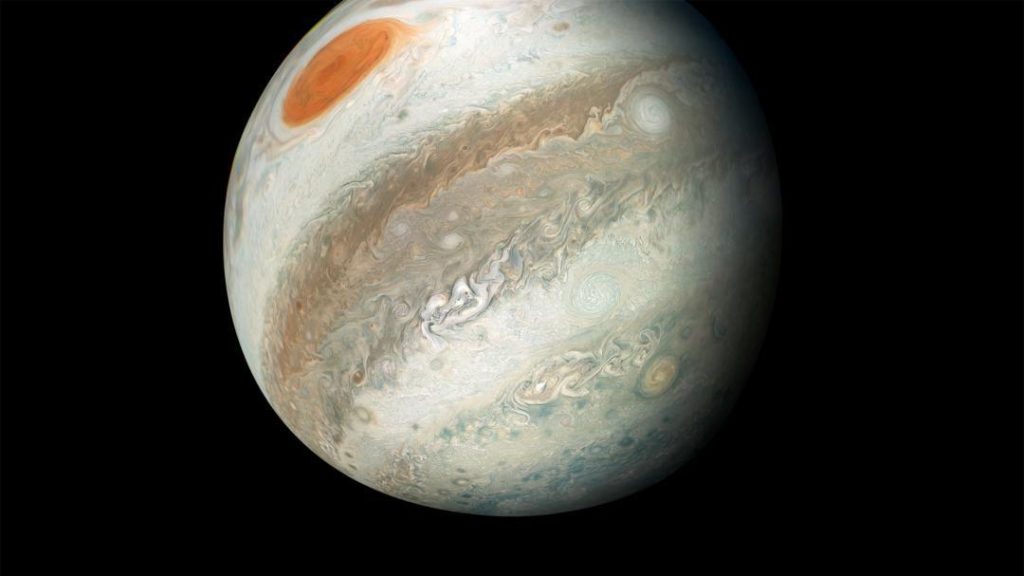
Jupiter was once twice its current size, then it shrank: Study
The gas giant Jupiter, already the largest planet in our solar system, has long been a subject of fascination for astronomers and scientists. With its massive size, stormy weather patterns, and numerous moons, Jupiter is a behemoth of the cosmos. However, a recent study has revealed that Jupiter was once even larger than it is today, and has undergone significant changes over its lifetime.
According to a study published in Nature Astronomy, Jupiter was once more than twice its current size, measuring around 300,000 kilometers in diameter. This is astonishing, considering that Jupiter is already approximately 143,000 kilometers wide, making it the largest planet in our solar system.
The researchers behind the study analyzed the orbits of Jupiter’s smallest inner moons to come to this conclusion. By studying the gravitational interactions between these moons and the planet, the scientists were able to reconstruct the planet’s past size and shape.
The study also suggests that Jupiter’s magnetic field may have been 50 times stronger during this early phase. This is significant, as the magnetic field plays a crucial role in shaping the planet’s atmosphere and interacting with its moons.
So, what could have caused Jupiter to shrink to its current size? The researchers propose that the planet’s rapid contraction may have been due to the loss of heat and gas from its interior. As Jupiter formed, it would have been surrounded by a disk of gas and dust, which would have provided it with a steady supply of fuel. However, as this material was consumed, Jupiter’s interior would have cooled, causing the planet to contract and shrink.
This theory is supported by observations of other massive planets in our solar system, such as Saturn and Uranus, which also show signs of having undergone significant changes in their past. It’s likely that these planets, like Jupiter, also experienced periods of rapid growth and contraction as they formed and evolved.
The implications of this study are far-reaching, providing new insights into the formation and evolution of our solar system. It also highlights the importance of continued research into the properties and behavior of our celestial neighbors.
Jupiter’s moons, in particular, have been the subject of intense study in recent years. The Galileo spacecraft, which orbited Jupiter from 1995 to 2003, discovered four new moons and revealed the existence of a thin ring system around the planet. More recently, the Hubble Space Telescope has provided stunning images of Jupiter’s moons, including the volcanic moon Io and the icy moon Europa.
The study’s findings are also significant in the context of exoplanetary research. As scientists continue to discover new planets outside of our solar system, they are finding that many of these planets are much larger than Jupiter. The study’s revelations about Jupiter’s past size and shape may provide valuable insights into the formation and evolution of these exoplanets.
In conclusion, the study’s findings are a fascinating reminder of the dynamic and ever-changing nature of our solar system. Jupiter, the largest planet in our solar system, was once even larger, and has undergone significant changes over its lifetime. The study’s revelations about Jupiter’s past size and shape provide new insights into the formation and evolution of our solar system, and highlight the importance of continued research into the properties and behavior of our celestial neighbors.






